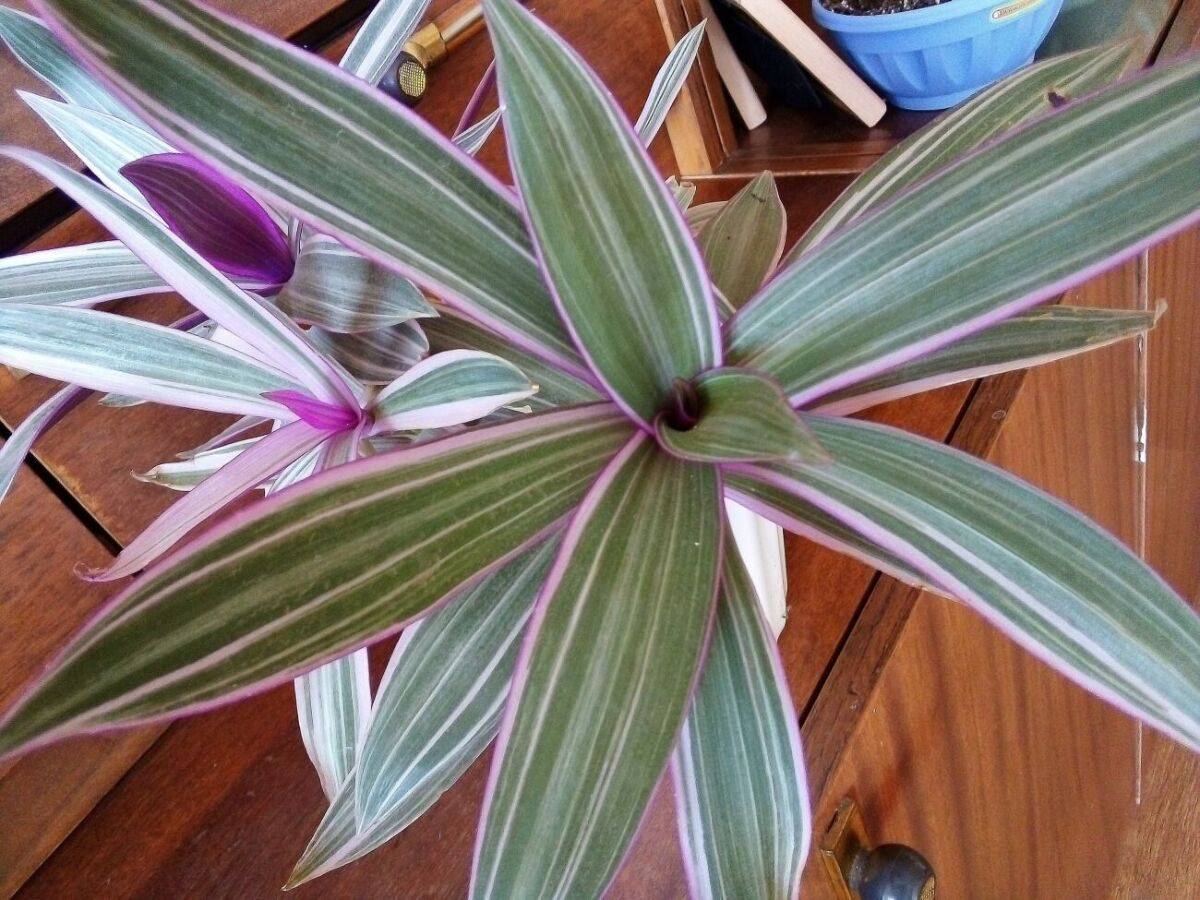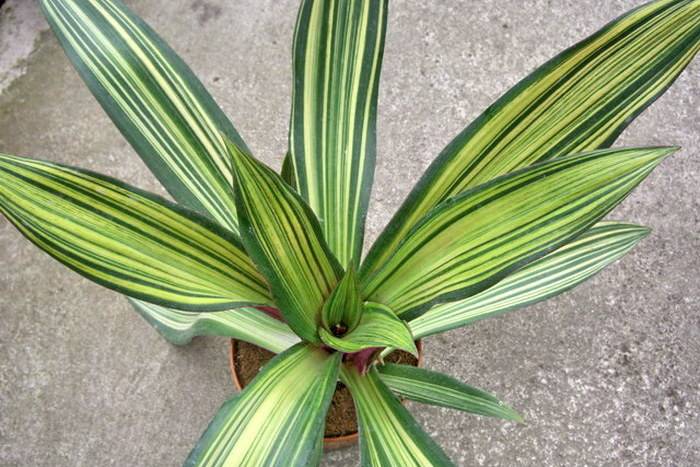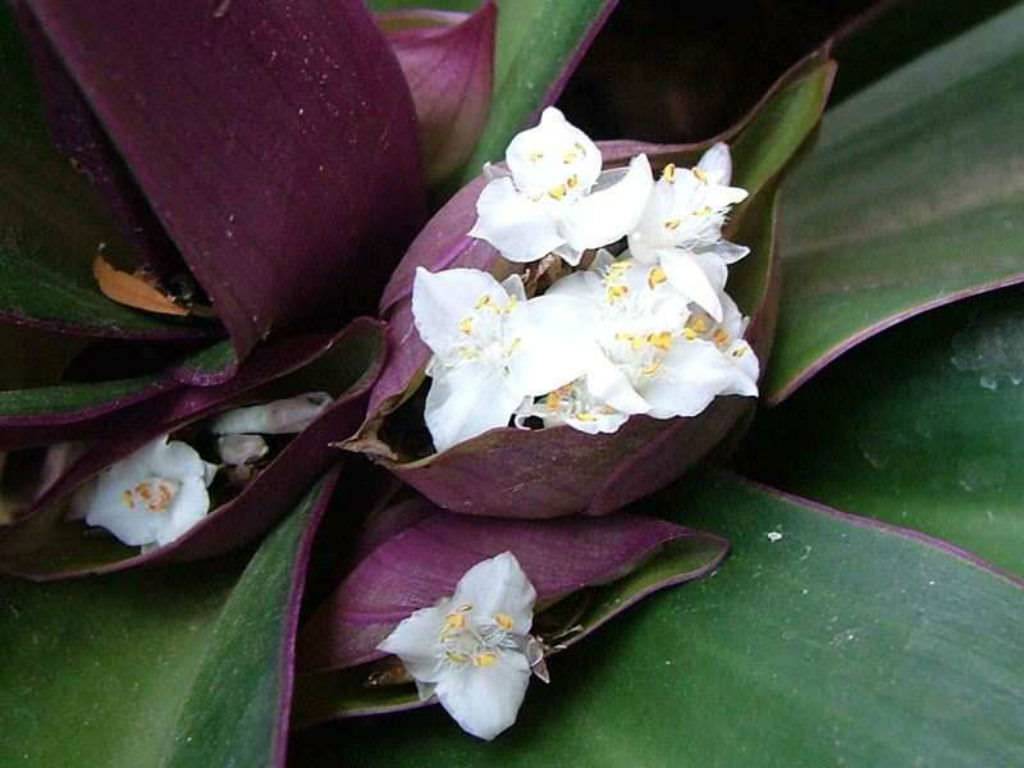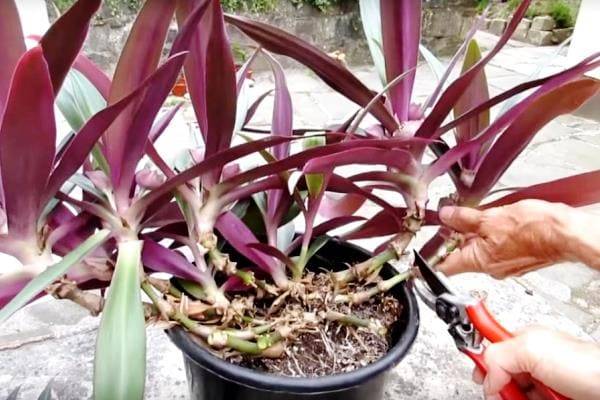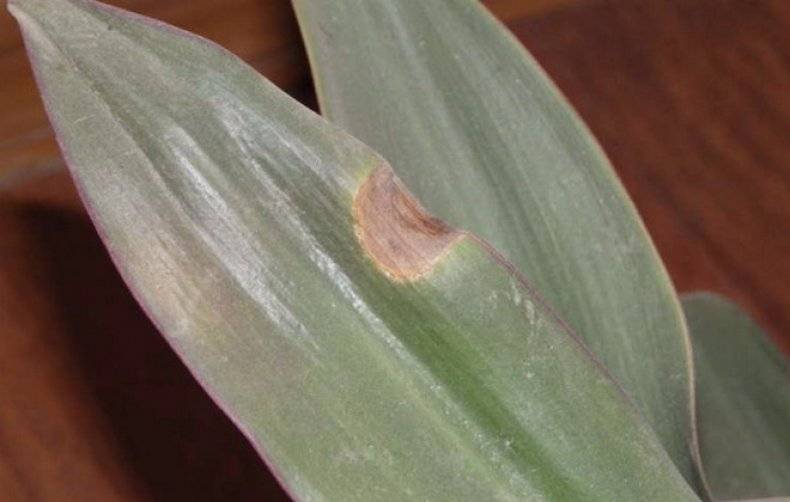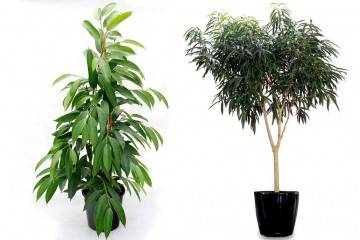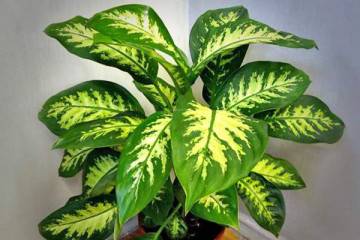Rheo flower - home care
Content:
Reo is a flower with large decorative leaves. It is also called as multicolored Tradescantia. The plant is unpretentious, even beginners can grow it. Tradescantia is not only beautiful, but also useful: it brings positive energy to the home. Below is information about caring for a rheo flower at home.
What does it look like and what family it belongs to
Rheo is a houseplant, a herbaceous shrub 30-45 cm high. Its leaves are long xiphoid with a two-color color. The upper part of the plates is green, the lower one is red or purple. There are variegated varieties with longitudinal white or pink stripes.
Reo belongs to the Kommelinov family.
Common varieties
There is a covered rheo and a variegated rheo. But the most common varieties are as follows:
- Spathacea Vittata. The upper part of the leaf plates is pale green, the lower one is pink;
- Stripe in Pink. The leaves of this plant are covered with green-white-pink stripes;
- Hawaiian Dwarf. The leaf plates are striped. The color scheme consists of 3 tones: white, light green, purple;
- Vitatta. Below the leaves are colored purple, on top - alternating green and yellow stripes.
Care features
In order for a flower to remain decorative for a long time, it must be provided with the required conditions. For rheo care at home is not difficult at all.
Temperature
Tradescantia can withstand a wide range of temperatures. In the summer, the flower can be taken out on an open balcony or terrace. In winter, the air temperature in the room should not fall below 5 ° C.
Lighting
Reo is kept in a well-lit, but shaded place from direct sunlight. Plants with variegated leaves will fade when placed in the shade.
Watering
Irrigate the land as needed. The topsoil should have time to dry out between waterings. The water is used warm, settled. After 10-15 minutes. after watering, excess liquid is poured from the pan.
Spraying
In summer, when kept outdoors, the rheo leaves can become covered with a layer of dust. In this case, the flower can be sprayed and even given a shower. The soil is preliminarily covered with foil. When kept in room conditions, it is enough to wipe the sheet plates with a damp cloth.
Humidity
If the indoor air is dry, the tips of the leaves may dry out. To increase the level of humidity, a container with water is placed next to the flower. Another option is to put a pot of rheo in a tray filled with wet expanded clay.
Priming
For the culture, a loose air and water permeable substrate is selected. The plant is planted in soil consisting of the following components:
- leaf humus;
- sod land;
- peat;
- sand;
- perlite.
In the garden center, you can buy a substrate for decorative deciduous plants and plant Tradescantia in it.
Top dressing
From spring to autumn, the rheo is fed once every 2 weeks.Use a universal fertilizer with an advantage in the composition of nitrogen, potassium, phosphorus. In the fall, the flower is fed once a month, in the winter it is given a rest.
Features of winter care
In winter, watering is reduced, but only on condition that the plant is kept in a cool room. If rheo is kept in winter at a temperature of 20-25 ° C, the substrate dries out faster and requires frequent moistening. Top dressing is not done in winter, but otherwise the plant needs to be looked after in the same way as in summer.
When and how it blooms
The rheo plant blooms most intensively in spring and summer. In the axils of the leaves, boats are formed in which white flowers. When the buds begin to dry out, they must be torn off along with the pedicels.
Pruning
Shoots of Reo grow quickly, while they can stretch out, and the plant will lose its decorative effect. To prevent this from happening, the tops of the branches are periodically cut off. Cuttings can be planted in a pot to propagate the crop. After pruning or pinching, lateral buds wake up, the bush becomes lush, beautiful.
How does it multiply
At home, rheo is easy to propagate both by cuttings and by dividing the bush.
Cuttings
Reproduction of rheo by cuttings is carried out as follows:
- Cut off the tops of the shoots.
- Remove the lower leaves.
- Sections are dusted with growth hormones.
- Cuttings are planted in pots with loose soil.
- The substrate is lightly tamped, watered.
The containers can be covered with foil to create greenhouse conditions.
By dividing the bush
Side shoots grow at the base of the bush. When transplanting, they are separated from the plant, planted in separate containers. Each bush should have roots and a rosette of their leaves. The presence of a large number of roots has a positive effect on the survival rate of children.
Transfer
The pot for an indoor flower reo is selected wide. This is due to the peculiarities of the root system. The transplant is performed as follows:
- Drainage is laid out at the bottom of the new pot.
- Pour in the substrate.
- A flower is gently shaken out of an old pot.
- It is planted in the middle of a new container, covered with a substrate along the root collar.
- The soil is tamped, watered.
The transplanted Tradescantia is placed in a dark place for several days for adaptation. Then she is transferred to a bright room.
Pests and diseases
When the soil is waterlogged, rheo can be affected by fungal diseases. The main ailments are powdery mildew and gray rot. You can save a flower by transplanting it into a new land. Rotten roots are preliminarily removed, and the remaining ones are sprinkled with charcoal as disinfection.
The main pest of the flower is the scale insect. You can get rid of the insect by wiping the leaf plates with soapy water.
Signs and superstitions
One of the important properties of rheo is that it brings positive energy into the house. A potted flower protects the home from the evil eye, negativity, pacifies aggression. It is recommended to keep it in the bedroom for couples who have lost family harmony.
The grower will have no difficulty in growing Tradescantia at home. The variegated rheo is beautiful in appearance, resistant to diseases, unpretentious in care. In addition, the flower will be beneficial - to protect the home from the evil eye and negative influences.
